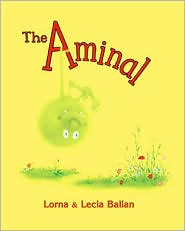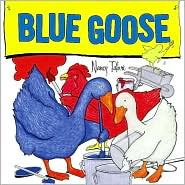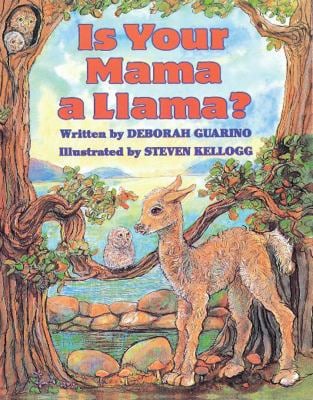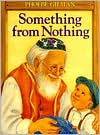 Early Literacy Aside--Explain: Songs are a great way to incorporate the early literacy skill, phonological awareness. Hearing and learning animal sounds helps your children hear the smaller sounds in words and singing emphasizes different syllables. This helps your children later to sound out words.
Submitted by Wendy B. Rancier, Roanoke County (VA) Public Library
Early Literacy Aside--Explain: Songs are a great way to incorporate the early literacy skill, phonological awareness. Hearing and learning animal sounds helps your children hear the smaller sounds in words and singing emphasizes different syllables. This helps your children later to sound out words.
Submitted by Wendy B. Rancier, Roanoke County (VA) Public Library
Old MacDonald Has a Farm Song
Early Literacy Aside--Explain: Researchers have found that one of the early literacy skills is phonological awareness. This is the ability to hear and play with the smaller sounds in words, like rhyming, playing with syllables or parts of words, and hearing beginning sounds of words. The beginning of this skills starts with children hearing and saying the sounds of animals.Sometime durng storytime sing "Old MacDonald" with the children, including several animals--cow, pig, sheep, chicken, duck, etc. Early Literacy Aside--Example: Making the sounds of animals contributes to phonological awareness and hearing sounds in words. Early Literacy Aside--Empower: Take advantage of opportunities to sing and say the sounds of animals with your children. It's fun and it also helps them hear the smaller sounds in words.
Submitted by Kimberly Burnette-Dean, Roanoke County (VA) Public Library
The Aminal by Lorna Balian

Submitted by Carolyn B. Morehead, Big Island Library, Bedford (VA) Public Library
Blue Goose by Nancy Tafuri

Help! A Story of Friendship by Holly Keller
 Early Literacy Aside--Explain: When you help your children pay attention to the print in books, you are helping to develop their print awareness, one of the early literacy skills that will later help them learn to read. I'll point out a couple of things in storytime today that will support this skill.
Read the story Help! A Story of Friendship by Holly Keller. [When you come to the page with the deep hole, you have to turn the book the long way.] Wow! This hole is so deep we have to turn the book around. Look the writing changed direction too!
Early Literacy Aside--Example: Children's attention often goes to the pictures. By pointing out the direction of print you help develop your children's print awareness.
Early Literacy Aside--Explain: When you help your children pay attention to the print in books, you are helping to develop their print awareness, one of the early literacy skills that will later help them learn to read. I'll point out a couple of things in storytime today that will support this skill.
Read the story Help! A Story of Friendship by Holly Keller. [When you come to the page with the deep hole, you have to turn the book the long way.] Wow! This hole is so deep we have to turn the book around. Look the writing changed direction too!
Early Literacy Aside--Example: Children's attention often goes to the pictures. By pointing out the direction of print you help develop your children's print awareness.
Shapes--Explain Aside
Early Litearcy Aside--Explain: Today our early literacy tip is on letter knowledge. You may think of letter knowledge as being able to write letters. Actually there is a lot to know related to letter knowledge long before children can write the letters. One aspect is recognizing shapes. Today I'll be pointing out some fun ways we can help them recognize and talk about shapes.
Print Awareness--Explain Aside
Early Literacy Aside--Explain: Our early literacy tip of the day today is on print awareness. There are many ways we can help children understand that print has meaning. Research studies point out that about 95% of a child's attention goes to the pictures. Today in storytime I'll be pointing out some ways we can help them focus on the print as well.
Reading--Language of Books
Early Literacy Aside--Explain: Reading is one of the best ways to introduce new words to your children. Many books have unfamiliar words. ones we would not use in regular conversations with our children. Talking about even one or two of the words before, during or after reading the book is one way to build your children's vocabulary. Knowing lots of words, having a large vocabulary, helps children not only understand what they later learn to read, it also helps them recognize words when they later try to sound them out. Today we'll see how the language of books expands your child's vocabulary.
Recess Queen by Alexis O'Neill
 Early Literacy Aside--Explain: One thing you can pass on to your children is an enjoyment of books. Children who enter school enjoying books and reading are more likely to stick with learning to read even if it is difficult. For over half our children, learning to read in school is difficult. I know we have a lot of book-lovers here. In today's storytime, I'll point out some ways to keep your children's attention and keep the booksharing time enjoyable.Book Introduction: I show the cover of the book Recess Queen by Alexis O'Neill and flip through the pages to show my love of a few descriptive illustrations, especially facial expressions that show feelings like”mad and scared.
Early Literacy Aside--Example: Read with your child in a comfortable setting so you may share and talk about the book, including what the pictures are saying. When you take time to talk with your child and listen to what your chld says about the pictures, you are helping to make an enjoyable time with the book, which helps print motivation.
Early Literacy Aside--Explain: One thing you can pass on to your children is an enjoyment of books. Children who enter school enjoying books and reading are more likely to stick with learning to read even if it is difficult. For over half our children, learning to read in school is difficult. I know we have a lot of book-lovers here. In today's storytime, I'll point out some ways to keep your children's attention and keep the booksharing time enjoyable.Book Introduction: I show the cover of the book Recess Queen by Alexis O'Neill and flip through the pages to show my love of a few descriptive illustrations, especially facial expressions that show feelings like”mad and scared.
Early Literacy Aside--Example: Read with your child in a comfortable setting so you may share and talk about the book, including what the pictures are saying. When you take time to talk with your child and listen to what your chld says about the pictures, you are helping to make an enjoyable time with the book, which helps print motivation.
Submitted by Carolyn Lewis, Pamunkey (VA) Regional Library
Is Your Mama a Llama? by Deborah Guarino
 Early Literacy Aside--Explain:The ability to hear and play with the sounds of words, as in rhyming, is an important skill for reading. To recognize these rhymes and how words are related by sound is part of what educators term phonological awareness and will help your children later sound out words.During the storytime, read the book Is Your Mama a Llama? by Deborah Guarino
Each page describes the animal that might be llama's mother. Let's guess what will come on the next page. I will emphasize the word that will rhyme on the next page. For example, if I say now, guess what animal we will see. The author gives us other clues, like brown and moo. So, we know the animal will rhyme with now is COW!
Early Literacy Aside--Example: Some books, like this one, use rhymes in a playful way. Playing with rhyming words is one good way to help children hear the smaller sounds in words which will later help them sound out words when they learn to read.
Early Literacy Aside--Explain:The ability to hear and play with the sounds of words, as in rhyming, is an important skill for reading. To recognize these rhymes and how words are related by sound is part of what educators term phonological awareness and will help your children later sound out words.During the storytime, read the book Is Your Mama a Llama? by Deborah Guarino
Each page describes the animal that might be llama's mother. Let's guess what will come on the next page. I will emphasize the word that will rhyme on the next page. For example, if I say now, guess what animal we will see. The author gives us other clues, like brown and moo. So, we know the animal will rhyme with now is COW!
Early Literacy Aside--Example: Some books, like this one, use rhymes in a playful way. Playing with rhyming words is one good way to help children hear the smaller sounds in words which will later help them sound out words when they learn to read.
Maisy Big, Maisy Small by Lucy Cousins

Submitted by Ellen Abramson, Fairfax County (VA) Public Library System
Feathered Friends Storytime Plan

Feathered Friends Storytime Plan
Submitted by Donna Johnson, Sioux City (Northwest Library Service Area, Iowa) Public Library
Babies Everywhere Storytime Plan

Babies Everywhere! for Two and Three-Year-Olds Submitted by Debbie Stanton of Kalona (Southeast Iowa LSA) Public Library
Something from Nothing by Phoebe Gilman

Early Literacy Aside--Explain: One of the best things you can do to help your child be ready to learn to read is to share enjoyable times as you share books. Children who have these positive experiences around books are more likely to stick with learning to read when it comes time for them to learn to read. That enjoyment, called print motivation, goes a long way! Today I'll point out a couple ways you can support enjoyable reading experiences.
Before reading the book Something From Nothing by Phoebe Gilman:
Early Literacy Aside--Example: This is one of my favorite books! It's very clever and I like to watch the mouse story down below here. Adults, when you are reading a book you especially like, let your child know how much you like it and what you like about it. This supports print motivation, the enjoyment of reading.
Read the book Something from Nothing by Phoebe Gilman.
